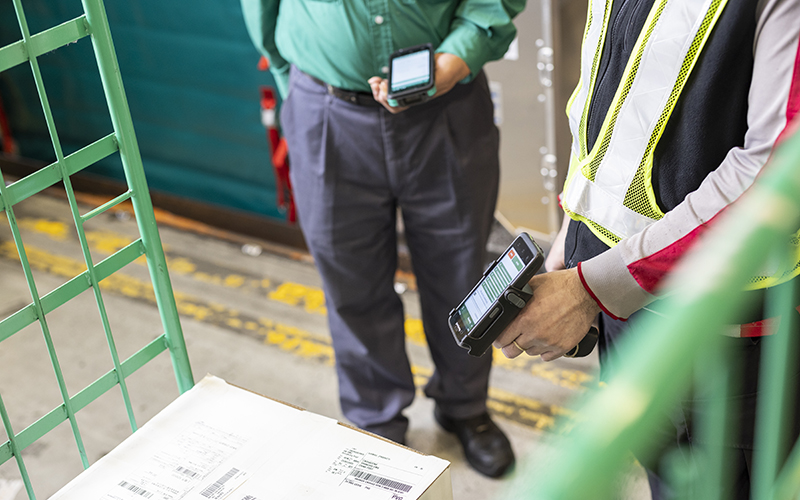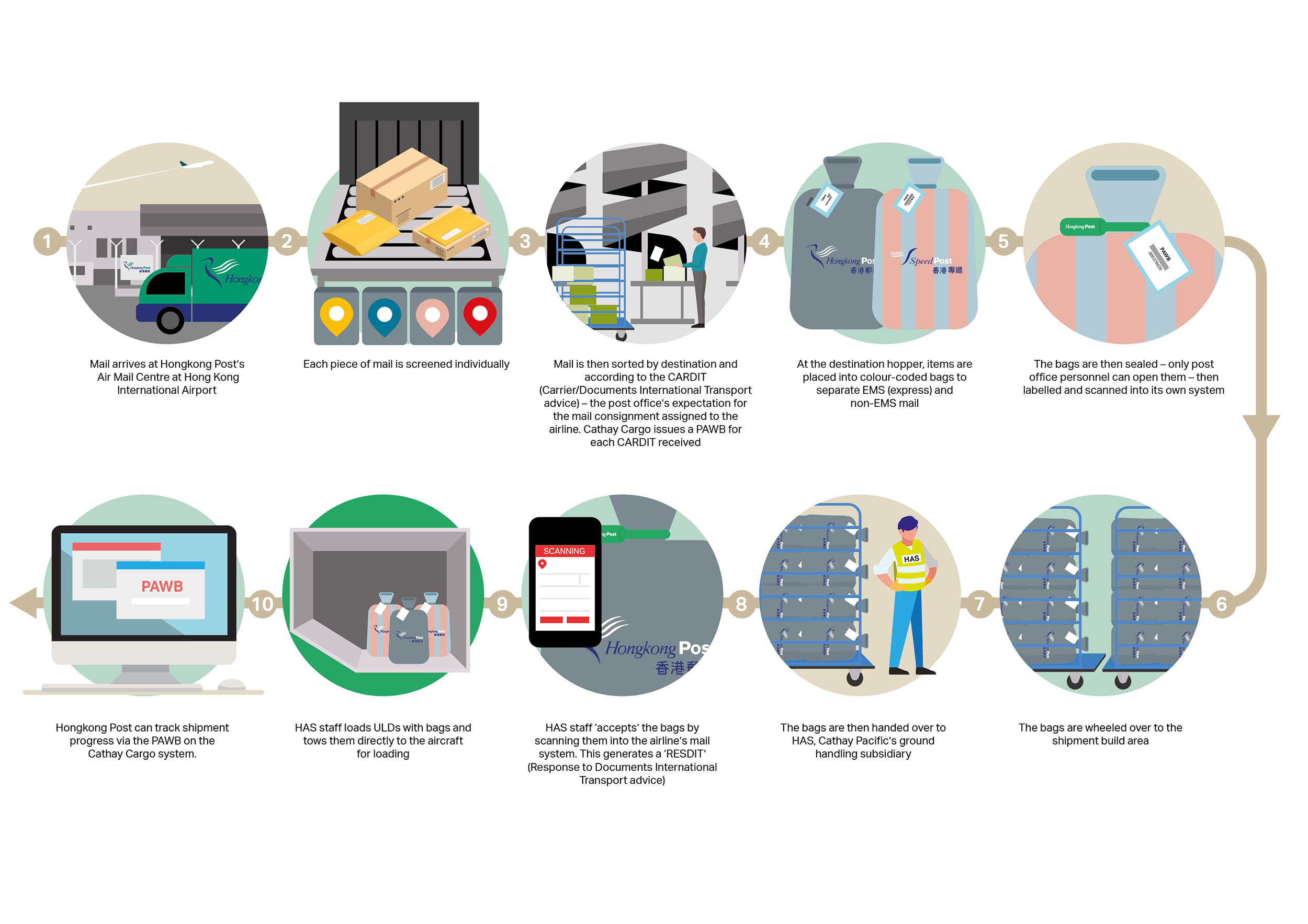The continuing rise in e-commerce is both a threat and an opportunity for the world’s post offices. The tightrope balance comes from both the declining quantities of letters in the digital age and the exponential rise in e-commerce parcel volumes as more people use online shopping from home.
According to a McKinsey report the ratio of letters to parcels globally has fallen from 13:1 in 2005, to 4:1 by 2015 – and is due to hit 1:1 parity by 2025. As the report says, ‘the entire logistics value chain for parcel handling is up for grabs’.

Postal pain points
While it is the case that post offices are still responsible for most of the world’s final-mile e-commerce deliveries, this is not a given. The threat to their share comes not just from e-commerce giants such as Amazon and Alibaba, which have their own growing fulfilment infrastructure, and the integrators such as UPS and FedEx, which are long used to sharing package-level visibility. There is also an ever-growing raft of start-ups with dedicated digital systems built with the present and the future in mind.
These new systems are crucial as both e-commerce consumers and e-tailers expect swift delivery of packages, trackable across every stage of the journey. The existing postal model for cross-border shipments hasn’t been able to provide that: historically, when post offices hand over mail bags to airlines, it’s tended to be a manual process without a digital data exchange. Essentially, tracking data goes dark from airport to airport.
At least, until now. Cathay Mail addresses many pain points for both postal customers and the airline, as Cargo Customer Solutions Manager Pascal Lai explains. ‘Booking is very important for airlines, but there is yet no way of booking for mail handling,’ he says. ‘This means that the visibility and the on-time performance is not as good as it should be at the moment.’

Transparent process for greater visibility
The refreshed Cathay Mail solution is a ‘mail as cargo’ solution that integrates mail handling data with Cathay Cargo’s systems via the PAWB – the postal air waybill. This electronic data interchange (EDI) technology gives both origin and destination post offices visibility of shipments being handled by the airline, down to the mail bag (receptacle) level. It also reduces a lot of the manual processes and paperwork in the handover.
Postal customers can check where a receptacle is by logging into the Cathay Cargo system and entering the PAWB number. This means they can pass on information to their customers about where their individual package is. In short, the EDI creates an integrated end-to-end network for postal customers, offering a much higher level of customer service and transparency for e-commerce shipments.
How Cathay Mail works
When a customer places an order with a shipper or e-tailer, the shipper hands the package to the origin post office, which then issues a CARDIT (CARrier Documents for International Transport) for the packages it wants to send; this is a request to a carrier (for example Cathay Cargo) that includes both destination and timing requirements.
In response, and here’s the key part; Cathay Cargo also issues a PAWB number for each CARDIT, so that when each receptacle passes through a checkpoint or a journey milestone and is scanned under Cathay Cargo’s care, that information is then updated on the cargo system.
This also includes when the receptacle is ‘nested’ with others in a ULD (Unit Load Device) during the flight journey. As each ULD passes through a cargo checkpoint, the data is updated. This information, now uploaded onto Cathay Cargo’s system, can be accessed by postal customers and thereafter transmitted to individual customers. It means there is no longer an information blackout on the airport-to-airport leg of a mail shipment.
Cathay Cargo’s Lai has been on a tour of the world’s postal services, some of which have trialled earlier versions of Cathay Mail’s mail as cargo solution. It’s provoking a lot of interest. ‘A lot of postal customers are very interested in working with us,’ he says. ‘They can see that we are very experienced in managing EDI data and they are willing to work with us and share that data with us, because it means they can improve their own service by offering visibility end-to-end. They know how important it is for their business that both parties manage mail shipment movements better.’
Among the interested parties is Royal Mail. Cathay Mail enables it to track mail by using the Postal Air Waybill (PAWB),’ says Roy Brien, Senior Procurement Manager at Royal Mail. ‘By entering the PAWB on the Cathay Cargo website, we can see the shipment tracking information, enabling us to update the information on our system and give item-level tracking for our customers, which is an expectation as e-commerce volumes increase.’

Cathay Mail advantages
Cathay Mail’s enhanced visibility and digitalisation with the PAWB means that the data created is more accurate than the previous labour-intensive paperwork. This enables more accurate capacity planning so that postal customers can manage their allocations more effectively, while giving Cathay Cargo the opportunity to confirm ad hoc postal bookings or use any unused space for cargo shipments, which creates better value for both sides.
Additionally, having reconcilable data makes account management and billing more straightforward – something that used to be a time-consuming and largely manual process. And in the event of flight disruption, the data can differentiate between surface air mail and express mail (EMS) shipments, which means they can prioritise. ‘It’s a very effective solution and enables Royal Mail to effectively manage its agreed allocation,’ adds Brien.
Lai also explains that this shared data extends to transparency that enables postal customers to see that Cathay Cargo is fulfilling its contractual obligations, as they can access a performance dashboard against targeted objectives. ‘With Cathay Mail, we are aiming to outperform the 95 per cent industry “visibility performance” standard, and achieve mail flown as booked according to the CARDIT plan,’ he says.
He adds that his global tour has attracted a lot of interest, and with postal customers keen to retain and grow their share of e-commerce, it may be little surprise that he has already won business on some new lanes with new and existing postal customers.
‘Cathay Cargo is a trusted, long-term partner of Hongkong Post and assists in conveying outbound and transit mail to destinations worldwide,’ says Steve Lau, Business Director (External Affairs), Hongkong Post. ‘Cathay Cargo will continue to be our close partner to support the growth of e-commerce businesses and position Hong Kong as a major hub in the region.’
Cathay Mail explained in 20 seconds: https://www.linkedin.com/feed/update/urn:li:activity:7086917946136031233










